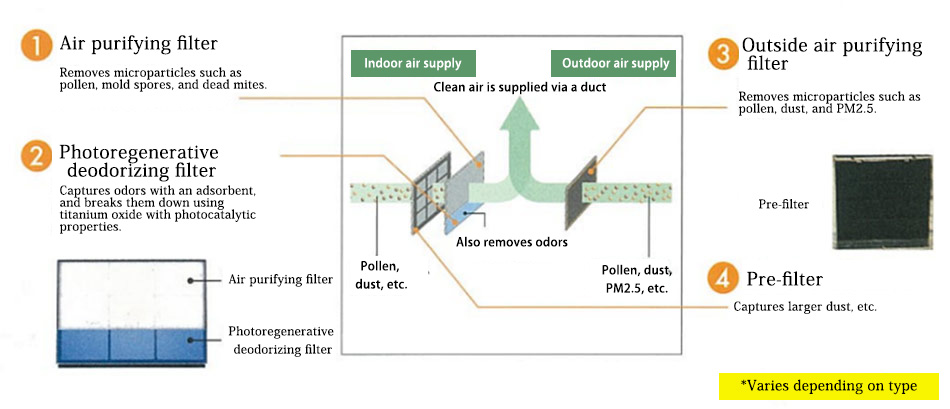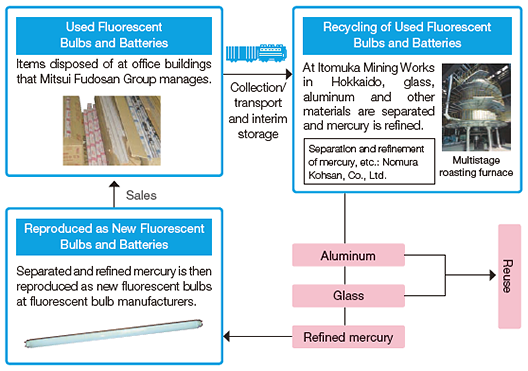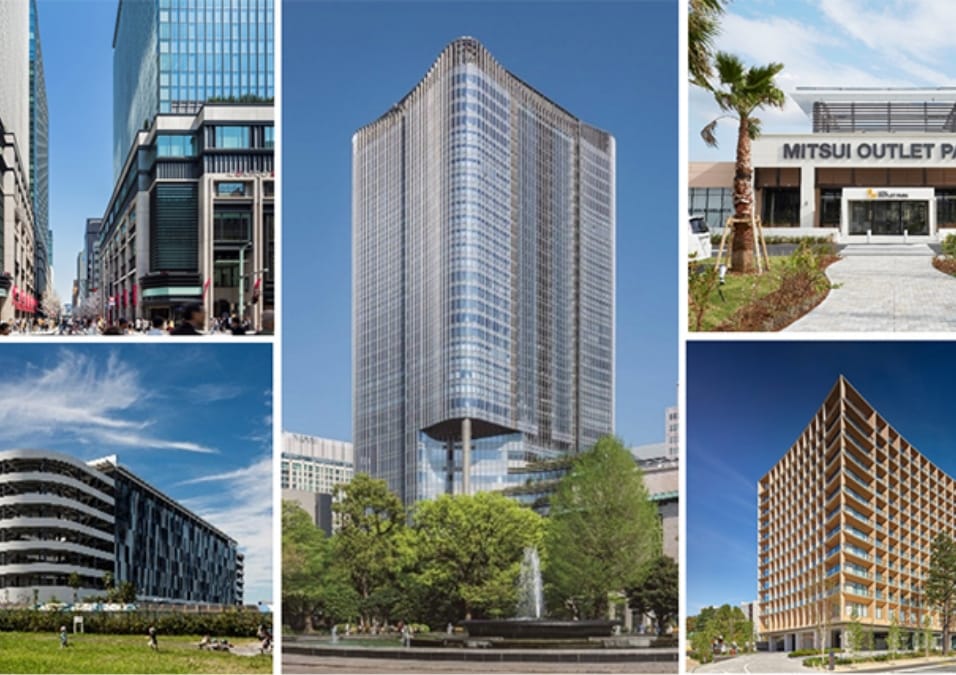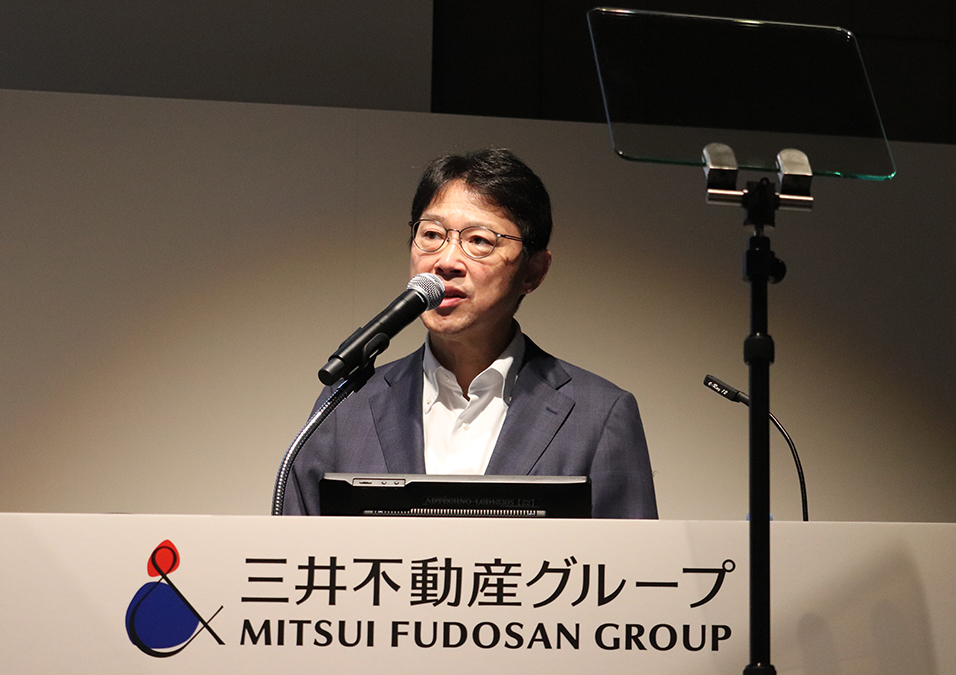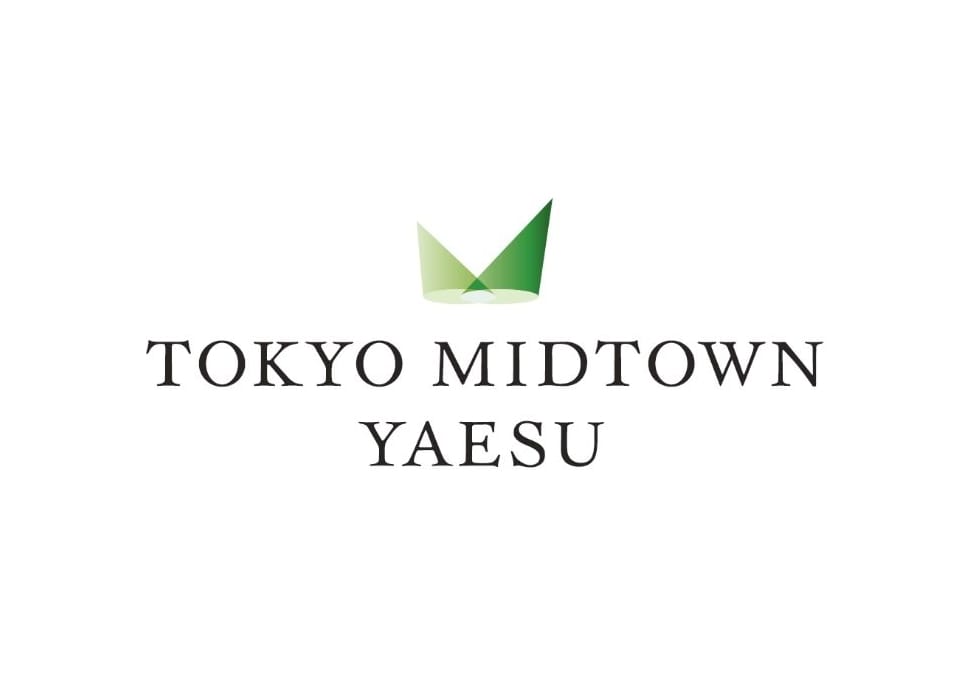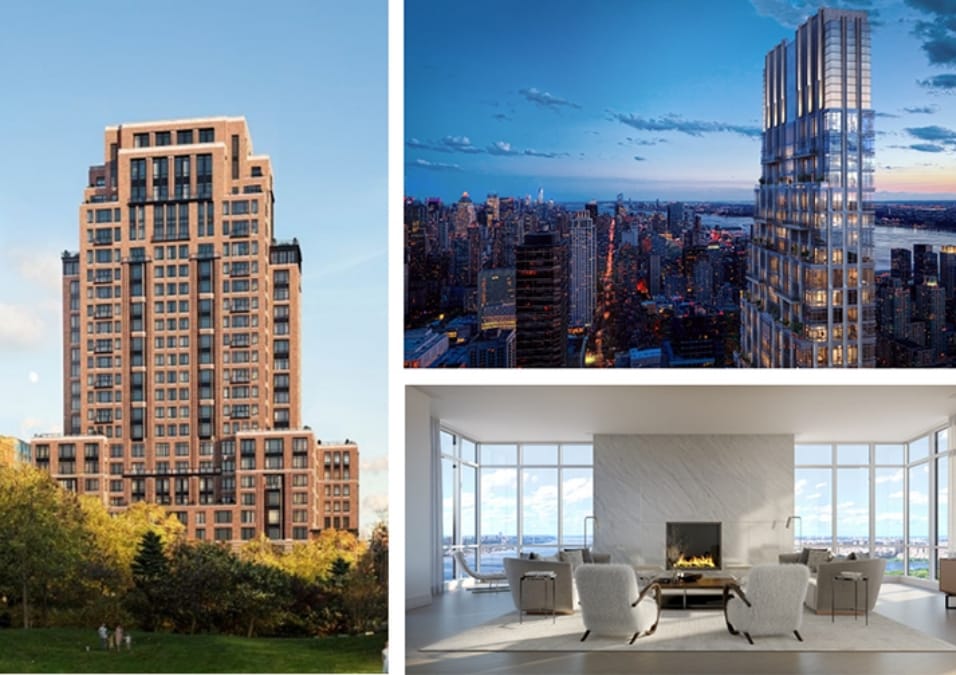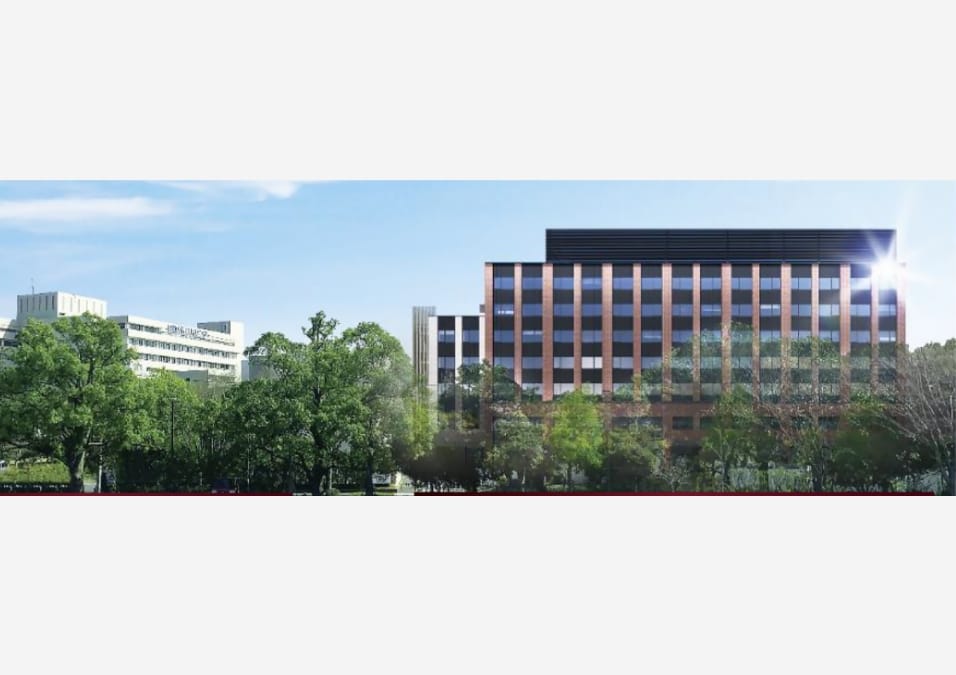Major Environmental Pollution Initiatives
Prevention of Air Pollution
Measures to Address Exhaust Gas at Facilities Producing Soot and Smoke
Boilers, cogeneration systems, and other soot and smoke producing facilities larger than a certain size and installed at office buildings, retail properties, hotels, large-scale logistics facilities, and other properties managed and operated by the Group, are subject to regulation under laws, regulations, and ordinances relating to air pollution. At these regulated soot and smoke producing facilities, we have installed exhaust gas treatment equipment, and we are working to prevent air pollution by curbing emission of air pollutants such as nitrogen oxides and sulfur oxides.
Prevention of Water Pollution
Wastewater Treatment at Office Buildings, Retail Facilities, and Hotels/Resorts
Restaurants above a certain size in office buildings and retail properties, as well as hotels and resort facilities managed and operated by the Group are subject to regulation under laws, regulations, and ordinances relating to water pollution. At these regulated facilities, we install wastewater treatment equipment, and discharge wastewater into sewage systems, rivers, the ocean, or other public waters only after treatment that ensures it meets regulatory standards.
Lowering Environmental Impact of Cleaning Solutions
Mitsui Fudosan Facilities Co., Ltd. has been using eco-chemicals with low environmental impact based on its own standards, with the exception of chemicals designated by its customers, for cleaning solutions (toilet cleaner, floor and general-purpose cleaner, wax, and removers). Mitsui Fudosan Residential Service Co., Ltd. in principle uses cleaning solutions with low environmental impact based on its own standards for cleaning condominiums, with the exception of some managed properties.
Mitsui Fudosan Residential Service Co., Ltd.'s Standards for Cleaning Solutions with Low Environmental Impact
- Cleaning solutions that satisfy the following conditions:
- ◎More than 60% biodegradable (after 28 days)
- ◎Chemically neutral
- ◎Low biochemical oxygen demand (BOD) and chemical oxygen demand (COD)
Responding Appropriately to Soil Contamination
The Mitsui Fudosan Group complies with relevant laws and regulations for surveying soil history. We also implement soil contamination surveys and take measures to remedy contaminated soil as needed.
Reduction of Hazardous Substances
Appropriate Disposal of Chlorofluorocarbons and Asbestos
When equipment containing chlorofluorocarbons is disposed of at our office buildings, retail properties and hotels, it is handled in an appropriate manner in accordance with relevant laws and regulations. In addition, in demolition and repair of buildings, retail facilities, condominiums and other structures, we observe laws and regulations relating to asbestos, and take proper measures such as notifying government agencies, and preventing the dispersion of asbestos.
Sick Building Countermeasures
For our office buildings and retail facilities, we have added guidelines for combating sick building symptoms to our eco-specifications (design request form, etc.). We make concerted efforts to prevent formaldehyde and other volatile organic compounds (VOCs) from entering our buildings, because they are a cause of sick building syndrome. Mitsui Garden Hotels uses low-formaldehyde building materials* including building components, adhesives, and paints. The housing business promotes the use of low-formaldehyde building materials to limit substances that cause sick building syndrome, such as formaldehyde.
*Low-formaldehyde building materials: Building materials rated by Japanese Industrial Standards (JIS) and Japanese Agricultural Standards (JAS) as having the minimal or second-lowest level of formaldehyde emissions.
Measures to Address Indoor PM2.5 Pollutants
Mitsui Home Co., Ltd. offers Smart Breeze, a healthy air-conditioning system for its custom-built detached residences. Smart Breeze is a 24-hour ventilation system, equipped with a high-performance filter that captures particulate matter of around 2.5 μm in size. This prevents infiltration not only of pollen and dust, but also of PM2.5, an air pollutant thought to have effects on health.
Overview of High-Performance Filter
Principal Resource- and Waste-related Efforts
Initiatives for Sustainable Forest Resource Procurement
To ensure sustainable procurement of forest resources, Mitsui Home Co., Ltd. as a company using such resources has formulated the Mitsui Home Group Resource Procurement Guidelines. The guidelines outline Mitsui Home's procurement policies and their scope of applicability, and are aimed at maintaining abundant ecosystems, sustaining local communities, practicing strictly sustainable procurement of forest resources, and contributing to reducing our global environmental load.
The Mitsui Home Group Resource Procurement Guidelines (Overview)
<Procurement Philosophy>
As a company that draws on trees and forests in the conduct of its business activities, Mitsui Homes adheres strictly to a policy of sustainable forest resource procurement to ensure an abundant ecosystem and to maintain regional society. Moving forward, the company will work diligently to reduce its global environmental load.
<Procurement Policy>
-
1 Confirm the legality of timber and lumber products
When procuring from countries and regions where the possibility of illegal harvesting exists, the legality of timber and lumber procured are confirmed in advance.
-
2 Procure sustainable forest resources
We promote procurement of forest resources from sources that practice sustainable harvesting, to protect precious forests, their environments and biodiversity.
-
3 Protect precious species
We work to protect valuable and endangered tree species.
-
4 Manage and maintain the supply chain
We work with partners to manage and promote legal, sustainable supply chains.
Life Cycle Analysis (LCA)
We are working to reduce the environmental impact of our buildings across their life cycle by analyzing every stage from their design, construction and management to their disassembly and disposal, and to reduce waste.
We also conduct life cycle analyses to reduce the environmental impact of our buildings during the planning and design of real estate development projects, and have received CASBEE certification as a result.
Further, to extend the service life of our buildings, in addition to improving their earthquake resistance, durability, and fire resistance, we design them so that the maintenance, management, and renewal of piping and other equipment can be undertaken with ease. Additionally, Mitsui Fudosan Residential Co., Ltd. expects to revise the cycle of large-scale repair work from 12 to 18 years by adopting highly durable part materials in condominiums for sale. This is expected to reduce the number of large-scale repairs, which will help to reduce labor and other burdens on the condominium management association, as well as to reduce life-cycle CO2 emissions from vehicles used for transportation and to reduce the amount of waste materials processed at the operational stage, etc. In addition, we conduct appropriate maintenance and renovations after buildings go into service. For example, Mitsui Home Co., Ltd. offers the Keep Well long-term building support system to maintain quality and performance over the long term through a combination of inspection and upkeep every 10 years after building delivery.
Also, to reduce the frequency of building disassembly and disposal, we have been working to improve structures built to old earthquake-resistance standards. Specifically, we are using the Refining Architecture method, which transforms old structures into like-new buildings using the same frame. In a Refining Architecture project we worked on with Shigeru Aoki Architect & Associates (on a rental property built in 1971 in Shinjuku-ku) we reused approximately 84% of the existing frame. With the cooperation of Shigeru Aoki Architect & Associates, we conducted joint research for this project to evaluate the effect of the Refining Architecture method on the reduction of CO2 emissions with Professor Tsuyoshi Seike of the Graduate School of Frontier Sciences at The University of Tokyo. It was found that the method would reduce CO2 emissions by 72% compared to when building a new structure of the same size.
3Rs Initiatives
The Group is working, together with business partners, tenant companies and stores, and customers, to conserve resources and reduce waste through the 3Rs (reduce, reuse, and recycle), while striving to prolong the useful life of its buildings. We also appropriately dispose of wastes.
Reduce
To reduce the generation of waste, we make every effort to restrict the use of disposable products, and have introduced a metering system. In an attempt to reduce waste from stores, our retail facilities feature a metering system that charges for the volume of waste generated.
Reuse
The Group aims to reuse materials instead of throwing them away to conserve resources and reduce waste. Every year since 2008, we have held the &EARTH Clothing Support Project - Bring a Smile to the World with Your Clothes - at retail properties operated by the Mitsui Fudosan Group. In this project, unneeded clothing is collected, and then donated to refugees and disaster victims in countries all over the world through the NPO Japan Relief Clothing Center. By promoting reuse of clothing, we contribute to the reduction of waste, and by working collaboratively with NPOs active on the international stage, we also help support people who need assistance due to poverty, natural disasters brought on by climate change, and conflicts.
(Further details can be found at the following URL.)
⇒ https://and-earth.mitsuifudosan.co.jp/clothes/
(Japanese version only)
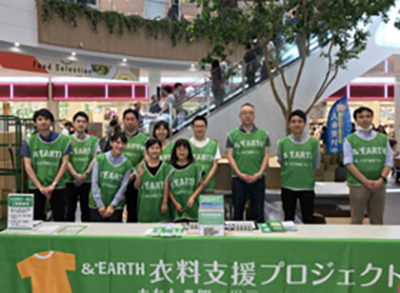
Volunteers
Recycle
Recycling Food Waste
At our office buildings and retail properties, working together with restaurants, food waste from restaurants is recycled into fertilizer and feedstock for livestock, or converted into biomass energy (electricity and gas).
At the resort hotel HAIMURUBUSHI (Taketomi Town, Yaeyama District, Okinawa Prefecture), we make compost out of coffee grounds from our restaurants, and use this compost to cultivate herbs and vegetables in the hotel gardens. In turn, the herbs and vegetables are served in our restaurants. Other food waste is processed on the premises with a food waste processor that uses microbes. In addition, at TOBA HOTEL INTERNATIONAL (Toba City, Mie), used cooking oil is collected and handed over to an industrial waste disposal company for recycling as fuel. Similarly, NEMU RESORT (Shima City, Mie) has been recycling used cooking oil since fiscal 2005.
At TOKYO MIDTOWN (Minato-ku, Tokyo), we classify wastes into 21 types, and we are working together with shops and tenants to recycle and appropriately dispose of waste. We have a total of 10 separated garbage storage spaces, by building and application, and appropriately store and manage waste until it is carried away from the site. In addition, we are working to ensure proper separation and recycling by installing garbage stations with easy-to-understand separation instructions in the office buildings of Tokyo Midtown Management Co., Ltd.
Recycling of Environmentally Friendly Tile Carpeting
Used tile carpeting from office buildings managed by the Group is collected and recycled into environmentally friendly tile carpeting, which is then reused in office buildings in the Tokyo metropolitan area. This recycling system uses environmentally friendly tile carpeting to conserve resources and reduce incineration waste, which in turn helps reduce CO2 emissions.
Wastepaper Recycling Loop System
In collaboration with traders of used paper, paper manufacturers, and paper distributors, the Group has created a unique recycling loop system for wastepaper, which is collected from office buildings managed by the Group in Tokyo, and from LaLaport TOKYOBAY (Funabashi City, Chiba). The wastepaper is recycled into original recycled office paper and is reused as toilet paper.
Outline of Wastepaper Recycling Loop System
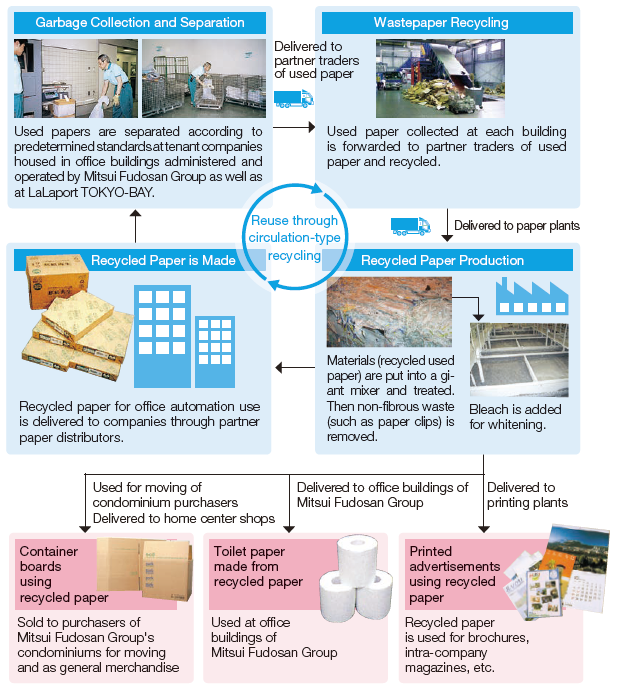
Used Fluorescent Bulb and Battery Recycling System
The Company has established a recycling system for used fluorescent bulbs and batteries in cooperation with four subcontractors including a recycling company and a transport company. Used fluorescent bulbs and batteries at office buildings managed by the Group are recycled through this system. Mercury extracted from the collected used fluorescent bulbs and batteries is reused as a raw material for new fluorescent bulbs. Separated aluminum and glass are also reprocessed into recycled aluminum and glass to recycle everything that can be recycled.
Schematic diagram of used fluorescent bulb and battery recycling
Efforts to Appropriately Dispose of Waste
The Group promotes the 3Rs, and appropriately disposes of wastes that cannot be reused or recycled based on laws, regulations, and ordinances relating to appropriate disposal of wastes. The Commercial Facilities Division completed the optimization of contracts with waste disposal companies. Since then, to maintain proper disposal, annual waste checks at all facilities and on-site inspections at one randomly selected property have been conducted. In addition, waste checks are always conducted when engaging new business partners or changing business partners.
Appropriate Storage, Management, and Disposal of PCB Waste
Appropriately stores, manages, and disposes of PCB waste at its office buildings, retail facilities, and hotels based on the Law Concerning Special Measures Against PCB Waste.




























